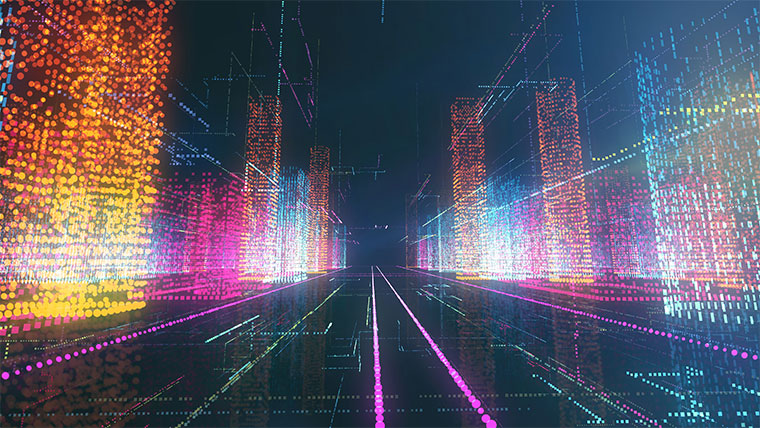“Streetlighting can make neighborhoods safer, smarter, and more sustainable,” confirms smart city expert Denise Pucilowski. Here’s what distributors need to know to tap into their share of this growing market.
Recently, the City of Los Angeles launched “L.A. Lights the Way”, a first-of-its-kind competition inviting applicants to design and create a new standard streetlight for Los Angeles. Already well known for their progressiveness in the area of city streetlighting – Los Angeles has converted over 200,000 of its streetlights to LED technology, reduced its lighting energy by over 70%, and delivered $10 million in annual energy cost savings since 2008 – the initiative shines a spotlight on the capabilities lighting can deliver to cities in the years to come.
In Part 1 of this two-part series, Norma Isahakian, Executive Director of the Bureau of Street Lighting for the City of Los Angeles, confirmed that “it’s becoming obvious that streetlights are more than just a means of lighting the street.”
Denise Pucilowski, Director of Innovation, Smart Cities at GE Current, a Daintree company (www.gecurrent.com), wholeheartedly agreed. In the following interview, Pucilowski shares her thoughts on how lighting can support cities and their residents in a range of beneficial ways in the future and how distributors can maximize their share of this growing market.
lightED: In your opinion, what does lighting ideally look like in the ‘city of the future’ and why? What benefits/capabilities can lighting deliver to cities now and in the future and what technologies are enabling this?
Pucilowski: Smart City IoT Platforms can transform traditional streetlighting into a network of connected digital devices that make neighborhoods safer, smarter, and more sustainable. Like a smartphone on a streetlight, the IoT Platform begins with the installation of intelligent nodes that house optical, acoustical, and environmental sensors capable of both edge storage and analytics – a key component in any smart city IoT platform. Specifically, advanced edge analytics can both alleviate network bandwidth limitations (and thereby reduce costs) as well as address privacy and security concerns and enables computer vision analytics, acoustical analytics, and artificial intelligence. Through the use of application programming interfaces (APIs), the solution provides near real-time data that can be used to automate and optimize the performance of devices and systems connected to municipal infrastructure. By attaching the smart nodes to new or existing light poles, cities can monitor transportation, address public safety, increase and improve pedestrian and bicycle flow, measure parking occupancy, and support endless other outcomes. Of course, no city can truly call itself “smart” if its buildings contain inefficient lighting products that aren’t connected; equipping indoor lighting with sensors that compile data to derive insights can drive additional productivity and efficiency in those spaces.
lightED: What can/should a lighting system reflect about that city’s commitment to cutting-edge and renewable technologies and the health of its residents and environment?
Pucilowski: Cities that have made a commitment to be more tech-driven and move forward with deployment of a Smart City IoT Platform have created possibilities that range from enhanced open data policies to new civic engagement models. Strategic use of the technology has the power to make these cities an “innovation hub” by connecting citizens, local developers, entrepreneurs, start-ups, universities, and companies with niche expertise, transforming data collected from intelligent nodes and other sources into meaningful applications that could lead to new city services, optimized operations, and improved quality of life for citizens. This kind of engagement can ignite a local app economy and drive further economic growth through new business opportunities. IoT solutions (like our CityIQ Platform) lay the foundation for a horizontal platform that all city departments can connect to and use – e.g., instead of individual departments installing and managing hardware for their own specific purposes, they could tap into data collected by intelligent nodes. Among other uses, police can stream video on demand for situation awareness while transportation can use aggregated and analyzed metadata to monitor and plan traffic control.
lightED: Do you feel that there’s a tremendous opportunity to upgrade the streetlights in cities and towns nationwide?
Pucilowski: Absolutely. It’s been demonstrated that LED is more efficient and can save money, and while you’re making that trip to the pole to upgrade the lighting, it’s prudent to also think about installing adaptive controls. At that point, why not take it one step further by installing a Smart City IoT sensor to that pole to begin collecting data that’s historically been very difficult to get but which can make an indelible impact on both city operations and residential life?
lightED: How can electrical distributors maximize their participation in city streetlighting upgrades in terms of the products they sell and value-added services they offer?
Pucilowski: As shown by the many city streetlighting upgrades underway nationwide, cities want to become smart and the means to get there today is through existing infrastructure and assets such as streetlights. I think that distributors need to lean into the space – first by educating themselves on the technology and how it works and then by reflecting on their core competencies, what’s made them strong partners in the past, and what areas of expertise they may want to think about building out.
lightED: Any final tips you can offer distributors relative to city streetlighting upgrades?
Pucilowski: Right now, I see a lot of misinformation and confusion in the smart city space, particularly as it relates to technology that can be deployed on streetlights. Historically, distributors have done an incredible job of offering information and training to customers. By building out a Smart City specialty, distributors can be part of the customer education process and help to differentiate between “smart lighting” solutions such as adaptive lighting controls and broader “smart city” solutions like the CityIQ IoT Platform, which takes advantage of real estate on the streetlight to enable a much broader set of uses that range from parking and public safety to transportation, pedestrian/bicycle flow, and more.
Tagged with lightED, smart city, smart street lighting, street lighting
